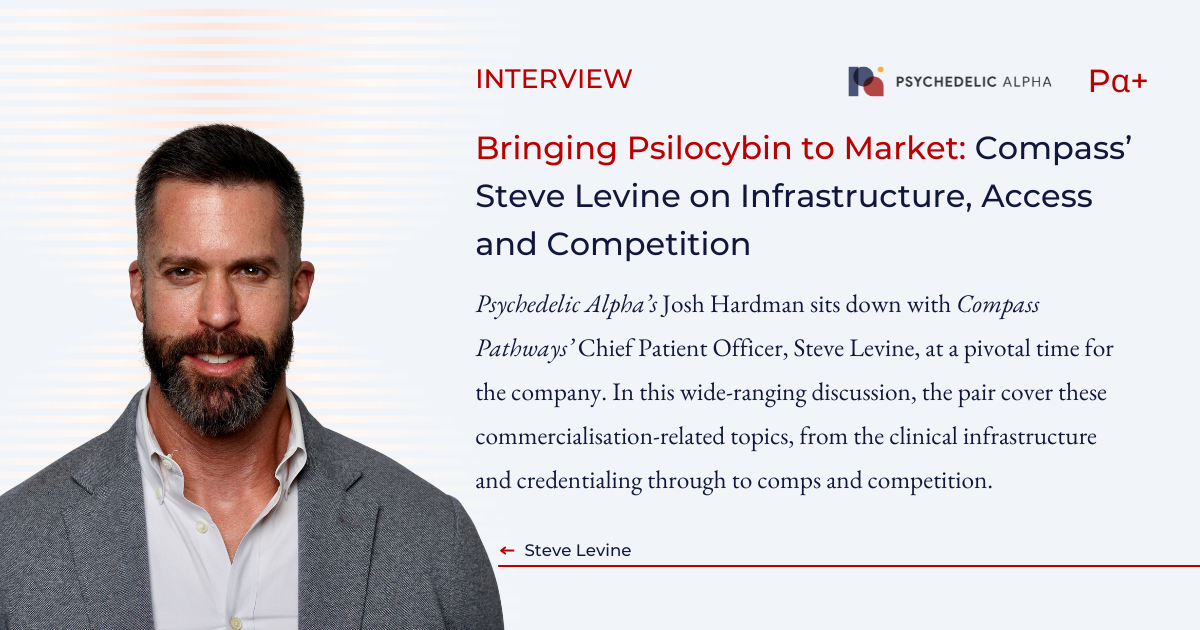Earlier this month in Madison, Wisconsin, Psychedelic Alpha’s Josh Hardman sat down with Compass Pathways’ Chief Patient Officer, Steve Levine, at a pivotal time for the company. Just a week prior, the psilocybin drug developer told investors it is bringing forward its commercialisation timeline by up to one year, following a “positive” September meeting with FDA and faster-than-anticipated enrollment in its second, larger Phase 3 study. Assuming that momentum holds, Compass is likely to deliver the first FDA-approved psilocybin therapy.
In this wide-ranging discussion, the pair cover these commercialisation-related topics, from the clinical infrastructure and credentialing through to comps and competition.
***
In this Interview
- Durability
- Short-acting psychedelics
- Patient and provider experience
- Spravato infrastructure readiness and staffing
- Label and REMS-related considerations
- Real-world effectiveness and label expansion
- Predicting responders
- Comps
- Monotherapy and adjunct
- Launch geographies
***
To read this 3,000+ word interview, please sign in to your Pα+ account…
Join Pα+ Today
Independent data-driven reporting, analysis and commentary on the psychedelics space: from business and drug development through to policy reform and culture.
Already a member? Log In
✓ Regular Bulletins covering key topics and trends in the psychedelics space
✓ Regular articles and deep dives across psychedelic research, policy and business
✓ Interviews with insiders
✓ Monthly interactive database and commentary on psychedelic patents
✓ Quick-take analysis of major developments
✓ A Library of primers and explainers
✓ Access to our full back catalogue


